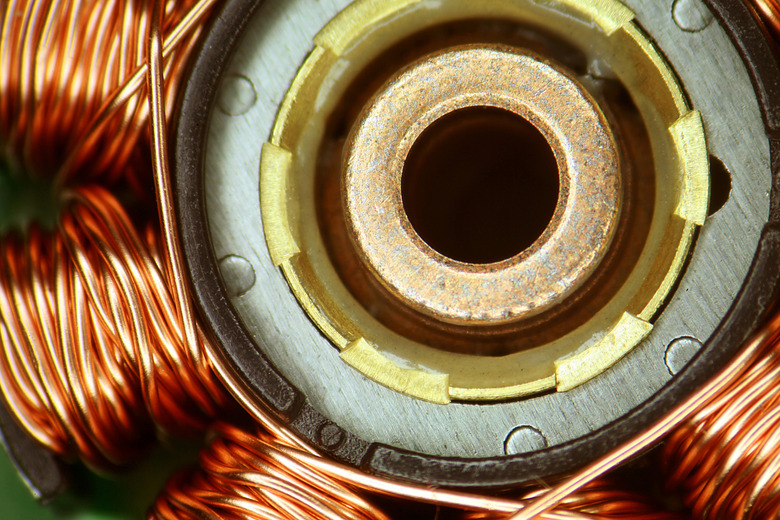How To Wire A High & Low Voltage Three-Phase Motor
A three-phase motor is more efficient than a single-phase motor because of the peculiarities of alternating current (AC). When a motor's power supply is brought in from three wires instead of just one, with the power delivery cycling through each of these in sequence (hence, the "A" part of AC), it permits an effective power level that is √3 times higher (about 1.728 times higher) than a corresponding single-phase set-up would be. Electrical power, you may recall, is the voltage level multiplied by current flow.
A three-phase motor may be set up in one of two configurations: a Y-type (often written "wye," as it's pronounced) or a delta-type. Also, these motors have either six or nine leads. With a six-lead set-up, you cannot choose whether you get a high-voltage or low-voltage system, but with a nine-lead set-up, you can select either one, using either configuration. This offers a total of four wiring possibilities.
Your circuit may also make use of programmable logic switches, or PLCs.
For reference, L1, L2 and L3 are usually black, red and blue respectively. The motor leads (T1 through T9) are normally, in order, blue, white, orange, yellow, black, gray, pink, red and brick red. Refer to a diagram, if possible, when following the steps below.
Wye Configuration, Low Voltage
Wye Configuration, Low Voltage
Connect 1 and 7 to L1, 2 and 8 to L2, and 3 and 9 to L3. Attach the remaining leads (4, 5 and 6) together.
Wye Configuration, High Voltage
Wye Configuration, High Voltage
Connect 1 to L1, 2 to L2, and 3 to L3. Then connect 4 to 7, 5 to 8 and 6 to 9.
Delta Configuration, Low Voltage
Delta Configuration, Low Voltage
Connect 1, 6 and 7 to L1; 2, 4 and 8 to L2; and 3, 5 and 9 to L3.
Delta Configuration, High Voltage
Delta Configuration, High Voltage
Connect 1 to L1, 2 to L2 and 3 to L3. Connect 4 to 7, 5 to 8 and 6 to 9.
Cite This Article
MLA
Beck, Kevin. "How To Wire A High & Low Voltage Three-Phase Motor" sciencing.com, https://www.sciencing.com/wire-high-low-voltage-threephase-motor-12093072/. 4 June 2018.
APA
Beck, Kevin. (2018, June 4). How To Wire A High & Low Voltage Three-Phase Motor. sciencing.com. Retrieved from https://www.sciencing.com/wire-high-low-voltage-threephase-motor-12093072/
Chicago
Beck, Kevin. How To Wire A High & Low Voltage Three-Phase Motor last modified August 30, 2022. https://www.sciencing.com/wire-high-low-voltage-threephase-motor-12093072/
